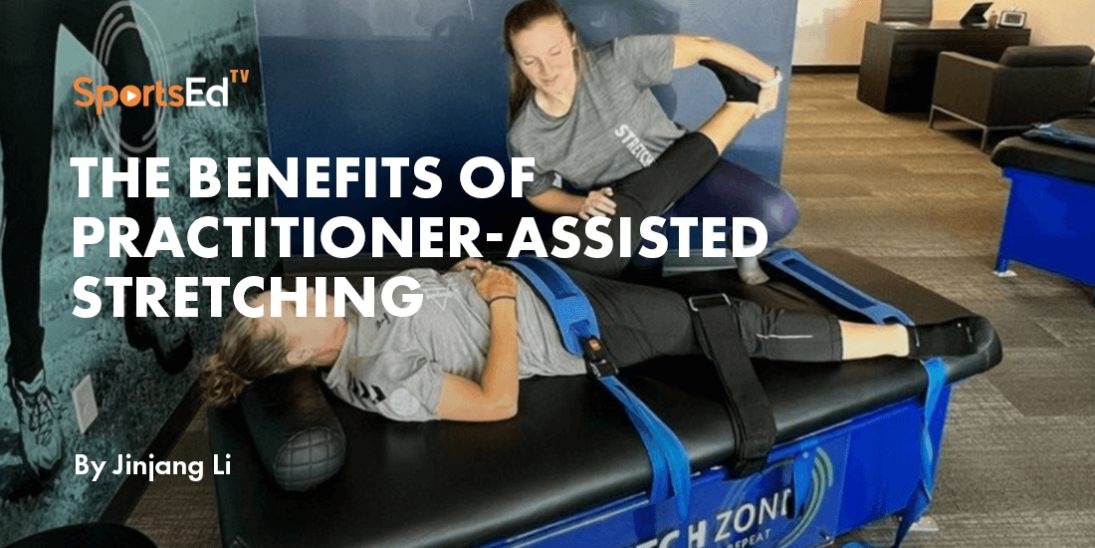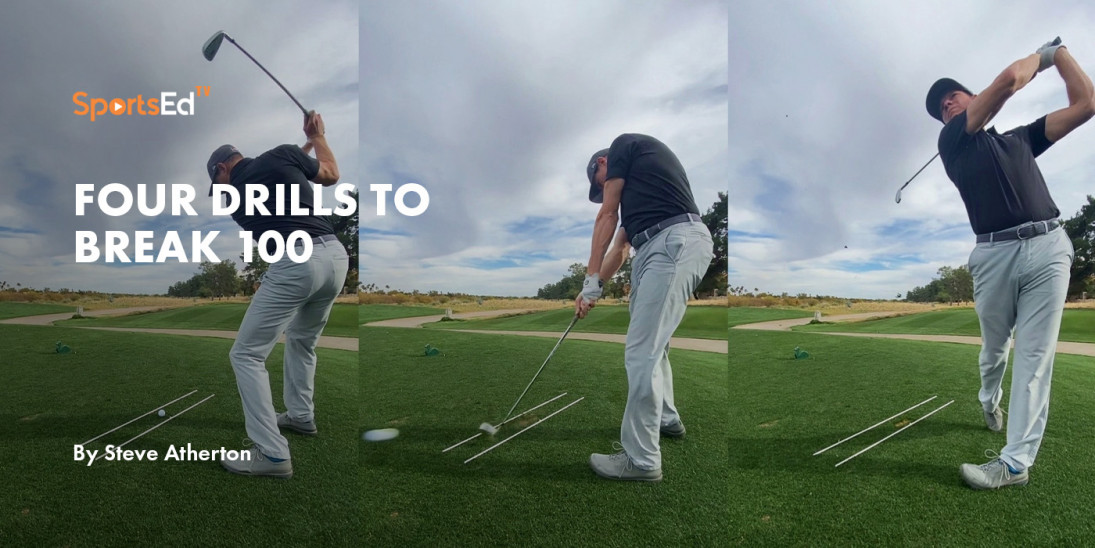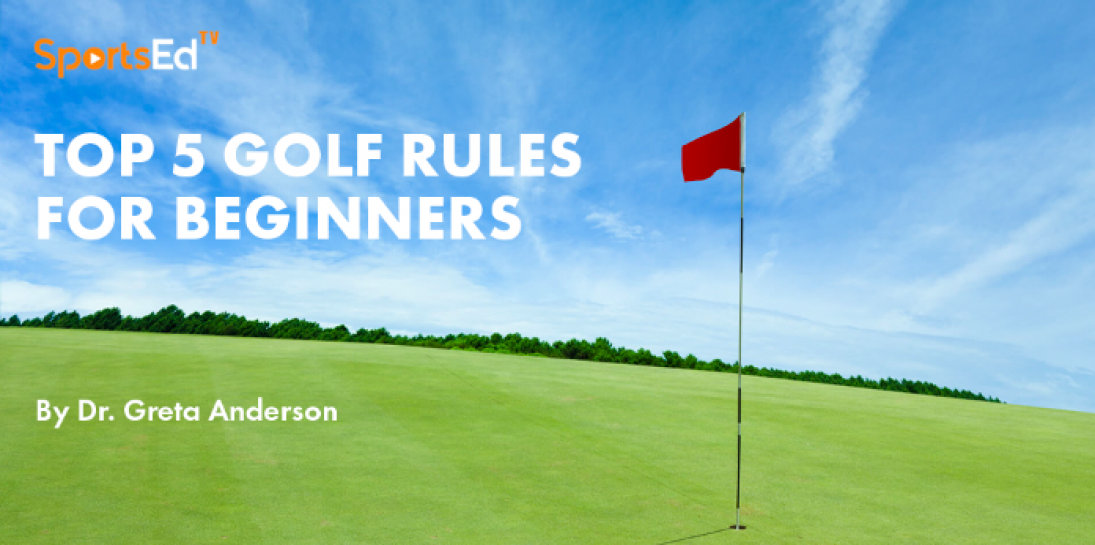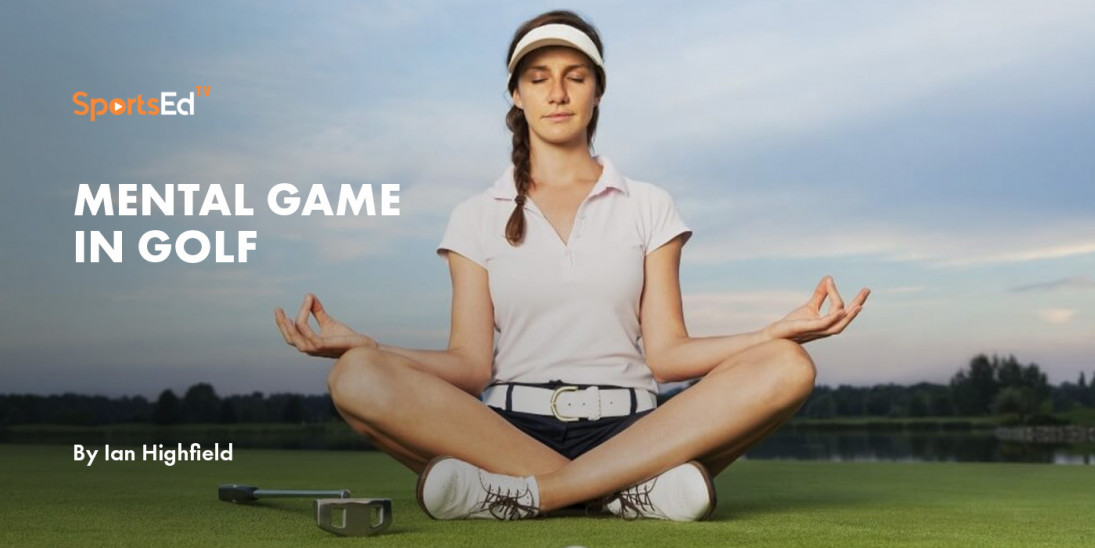Golf
Welcome and thanks for visiting...

A Conversation with Mike Malaska - Shot in Aspen, Colorado
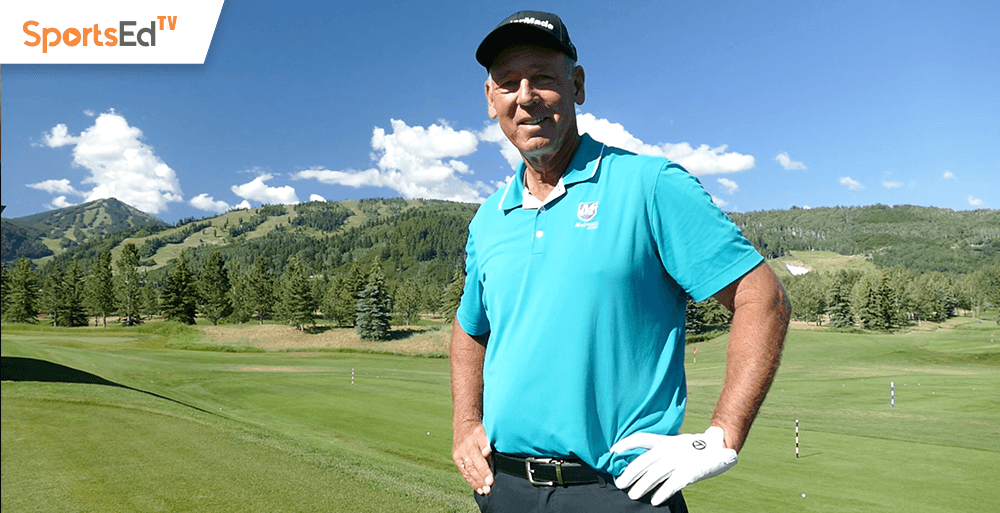
SportsEdTV’s Director of Golf, Roberto Borgatti, meets up with Mike Malaska, PGA Teacher of the Year in Aspen, Colorado to talk about essential matters golf. Read Mike’s answers about teaching and the best path to becoming a better player.
You can watch the video of Roberto and Mike’s conversation
(*times noted so you can scrub ahead to the topic of interest)
THE ART & SCIENCE OF LEARNING THE SWING (00:00-3:33)
Posture and motion pattern is key in a powerful, healthy, and consistent swing motion.
Q: What Are The Secrets For Teaching The Swing Motion?
Mike Malaska: “If you give someone a medicine ball or just have them rotate to the left or the right. Can you do that? Well, ok then what your feeling is how a golf swing feels like, it’s just on a different plane.
So identifying a person’s kinesthetic awareness, or pattern for what you’re trying to get them to do is critical. Most people know all the patterns relative to golf, you just have to know what pattern you’re trying to replicate.
Golf is an art form.”
Mike tells the story of coaching a player from Japan, someone who couldn’t break 100, who became a low single-digit handicap in less than one year.
His student was Japan’s best basketball player and a Tai Chi Master,
Rather than giving this student a club, Mike taught this Japanese player the motion patterns of an effective swing, BEFORE ever hitting a ball.
Takeaway: Identifying your optimal posture and motion patterns are prerequisites to good swings and shots. In short, it is essential to know where to start (your set up) and how to move your body and club thru space (your swing).
| YOUR HANDS & ARMS (3:39-7:32) |
Q: What is the role of the Hands & Arms in the golf swing?
Mike Malaska: “Initially, we’re driven by our feet, hands, and toes. That’s where your senses are.
If the hands know what they’re supposed to do and your arms know where there supposed to go...then your (body) knows what makes sense from a motion perspective.
If he were to get the hands outside “if I did that in baseball, I’d only do it once because I’d get jammed and hit my hands, OUCH!”
In the video, Mike shows you a great drill to learn and train the essential action of the hands (and arms) with a simple, breakthru drill.
The Drill: Mike sets up a club on the target line, directly under his hands. He demonstrates how the hands and arms should not move outside the club, outside their original set up position. This results helps you maintain your body’s set up angles during the swing, rather than lifting up and out.
This drill is a real eye-opener, as we often get so focused on the action of our shoulders and hips, we overlook the action of the arms, hands, and club.
SLOW MOTION SUCCESS: TRAINING WITH ‘DIFFERENT SPEEDS’ (7:33-9:01)
A discussion on the benefits of training at normal speed, slow and super-slow motion.
Q: We’ve watched Tiger Woods and other top players practice on the range, in what seems like slow-motion. What are the benefits?
Mike Malaska: There are three different speeds to train three different systems. Full speed is training your reflexes, reinforcing your reflexes.
Full Swing “half-speed’ is where you learn the most training.
The most effective is ‘super slow motion’. There are no forces involved, so you know what forces to exaggerate in super slow motion. Just enough speed to feel the momentum and the weight of the clubhead. At that speed, you can feel how everything connects!
Takeaway:To evolve and more effectively integrate a swing change, try training in super-slow motion when you practice.
IMPACT is Everything! (9:02-11:44)
While an infinite number of moments exist in the golf swing, the most critically important is impact.
Q: How should a teacher and player approach impact?
Mike Malaska: “There isn’t just one thing that’s going to make it all work.
People see all these positions learning the golf swing. How am I at the top? How am I here, how am I there?
I ask players, “show me impact, show me where you’re trying to get to”.
That was one of the biggest moments of “aha, o my goodness” no wonder people can’t do this”!
What I realized is that they had no real sense of what it is that they’re trying to do. When it should be the driving task for everything you do in a golf swing.
So probably the first thing we should address is WHERE IMPACT IS. How your club connects to you, and the clubface and where is impact...
Your brain being ‘taskmaster’, says “ok, if that’s where I’m trying to get”...Some lot of these other movement patterns have no relevance to that task, so a lot of the things people are trying to fix automatically go away.”
Takeaway: Getting to the proper impact position should be the driving force of your motion pattern. If that’s your goal, you will most quickly develop your optimal swing motion.
IMPACT DRILLS (11:45-13:38)
Learn to produce powerful, consistent shots with two simple, breakthrough exercises to get you in the right impact position.
Q: How do you best train for impact?
Mike Malaska: “I have people stand, holding their hands where they’d be address (without a club)... and make swings leaving their left hand in place. (see video for drill)
If you develop the right task, a lot of what we want the golf swing to become just does it.”
Takeaway: Mike and Roberto demonstrate two excellent drills for a powerful impact position. Effective, dynamic drills help you quickly develop the proper setup angles, impact and your signature swing motion.
DOES THE MYTH OF PERFECT, ALL-KNOWING INSTRUCTOR EXIST? (13:39-15:15)
Like their students, the best instructors continue learning and evolving and refine our craft by sharing ideas.
Mike Malaska: “Every day is a learning process”.
Takeaway: The sport of golf, is unique as a life-long learning process for everyone, allowing even the player at any stage or age to improve their technique.
IN SEARCH OF PERFECT POSTURE (15:26 - 17:14)
Posture is your structure, a key fundamental, that learned properly will serve as a solid foundation on which to build your swing. It will also save your back! probably end it at 18:20
Q: What does good posture look like to you?
Mike Malaska:” If I just stand erect...And I normally stand tall—that is my posture! Which is how my body functions and I just put an angle on it to bring to swing on an arc that’s appropriate (see video for demonstration).”
Takeaway: Your spinal alignment should not be compromised, but achieving an optimal setup posture should be natural and tension-free.
THE BIGGEST KILLER— TENSION (17:15-19:26)
Learn to rid your body of excess tension and find the appropriate athleticism to apply for better golf.
Q: What do you mean by tension?
Mike Malaska: “What’s the biggest thing we fight in sports? It’s tension.
As soon as you force posture, you create tension...A lot of times, the way people force posture is not how muscle development should hold the posture. So you’re actually using the wrong muscles to create posture.
If you’re standing over the ball and you’re already tense, it’s unlikely that as you swing that it’s going to get less.
As an athlete, whether I was a pitcher or a golfer...forced positions create more tension not less.
Your body’s engaged.”
Takeaway: Posture should not be forced, nor tense. The objective is to bring good standing posture into your address. This is essential for a healthy, more athletic swing. Medicine Ball Swings help you find the right levels of engagement.
ACTION OF THE ARMS AND SHOULDERS (19:27-20:11)
The architecture, the picture of your swing is created by your skeleton and the body’s bigger muscles, while smaller muscles of the arms and hands articulate in a key certain fashion and in concert with the shoulders.
Question: What is the role of the Arms and Shoulders in a great Swing ?
Mike Malaska: “You have to learn what it feels like to have your arms rotate and swing independent of your shoulders. I see a lot of people with light grips, but their shoulder sockets are so tight”.
Takeaway: Learn to properly use your Shoulders and Arms for coordinated speed and power.
‘SETTING UP’ FOR SUCCESS (20:12-25:33)
A lengthy discussion of the setup nuances— To tilt or not to tilt?
Most instructors recognize an important second tilt. How you do this is key.
If you feel like you’ve tried everything under the sun, this will come as a Surprise, a valid alternative! Mike presents a Revolutionary idea, rather than setting up with a second tilt away from the target—stand with NO TILT and BEND your left (lead) arm.
Could Bending your Lead Arm at Address Work For You?
Mike Malaska: Any time you take your body out of 90-degree angles you compromise something. I played (well) for a long time, where I set everything level, but my left arm was slightly bent in my set.
So, I could make a case, why do you have to have your left arm straight and your shoulders tilted at all (at address) when that’s a static position, not a dynamic position.
Any athletic motion is a combination of offsetting forces...so posture to stay in balance is about offsetting forces.
Golf swings right from the set up is how to move, bend, and offset forces.”
Takeaway: Mike gives a logical case for why bending your left arm may be a better idea (or at least an optional one) than tilting away from the target may work for you. Says Mike “Every athletic motion is a combination of offsetting forces…”
YOUR HIPS—KEY TO A HAPPY GOLFING LIFE (25:34-28:19)
Staying in your posture is a characteristic of the efficient swing motion.
Mike shows how to stay in your posture, by keeping your hips back during the golf swing...and how most beginning golfers learn the WRONG WAY.
What Is The Right Hip Action In The Golf Swing?
Mike Malaska: “If you look at your hip sockets and center of your pelvis. What most really good players do, the center of their pelvis never moves closer to the ball.”
If you look at the greatest players swings, their hips always stay back. As your hips turn, your right hip socket has to move back as much as your left hip socket goes forward
Watch a demonstration in the video of the hip motion of the world’s top tour players, and breakthru and gain more consistency and power.
In an effective swing, your rear hip must move behind you in the backswing. Says Mike, if not “you’ll never feel free”!
Takeaway: Proper hip rotation will allow you to maintain your address posture. You create/maintain the space for a powerful extension of the arms and experience freedom in your swing.
UNDERSTANDING MOMENTUM IN THE GOLF SWING— (28:20 - 33:55)
You’ve heard the expression or watched cartoons of Swinging a Cat...Mike demonstrates a great drill to master how to move properly to offset momentum.
Question: What’s one of your favorite drills for swing development?
Mike Malaska: “If you take a duffel bag, fill it with some weight and swing it in circles, you will learn how to offset momentum.
As you keep doing the drill you’ll learn how to accelerate and offset the momentum of the club to stay in balance.
You can master managing the forces of dynamic balance and momentum in your golf swing with a simple exercise using a duffle bag.
A great workout exercises to strengthen your swing and build athleticism, you’ll learn the key dynamics of the swing.
Takeaway: Learn to apply dynamic balance and momentum!
VIDEO TABLE OF CONTENTS
- THE ART & SCIENCE OF LEARNING THE SWING (00:00-3:39)
- YOUR HANDS & ARMS (3:39-7:32)
- SLOW MOTION & TRAINING AT ‘DIFFERENT SPEEDS’ (7:33-9:01)
- IMPACT IS EVERYTHING! (9:02-11:44)
- TWO IMPACT DRILLS(11:45-13:38)
- ‘DOES THE PERFECT INSTRUCTOR EXIST? (13:39-15:14)
- IN SEARCH OF PERFECT POSTURE (15:15 - 17:14)
- GOLF’S BIGGEST KILLER— TENSION (17:15-19:26)
- ACTION OF THE ARMS AND SHOULDERS (19:27- 20:11)
- ‘SETTING UP’ FOR SUCCESS (20:12-25:33)
- YOUR HIPS—KEY TO A HAPPY GOLFING LIFE (25:34-28:19)
- MASTERING MOMENTUM IN THE GOLF SWING— (28:20-33:55)

